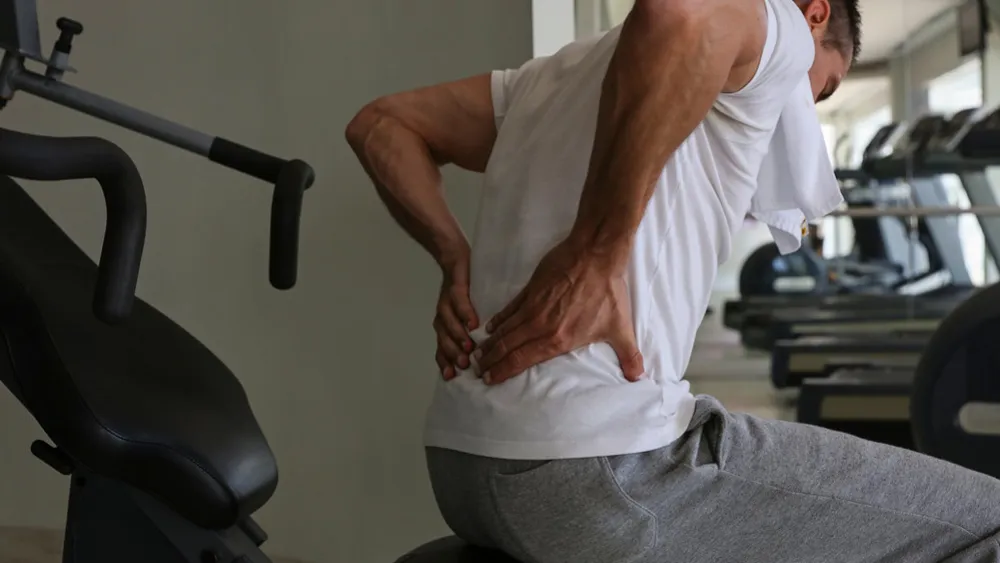




Nagging Aches and Pain Got You Down? Here’s What to Do About Them and When to Seek Help
Published: Sept. 26, 2023

If you’re one of the more than 51 million U.S. adults suffering from chronic pain, relief may be closer than you think.
While there’s not always a cure for chronic pain conditions, recognition and proper treatment can significantly improve your quality of life and functionality.
The Most Common Types of Pain
NECK AND LOWER BACK PAIN
Neck and lower back pain may be the most common complaints I receive from patients. And in many cases that don’t involve injury or strain, the accompanying diagnosis is cervical (neck) or lumbar (low back) spondylosis, which describe the wear and tear – or degenerative changes – that affect the discs and joints of the neck or back.
These conditions typically affect people as they age, but certain environmental and genetic factors can cause them earlier in life.
JOINT PAIN (SHOULDERS, KNEES AND HIPS)
Chronic joint pain in the shoulders, knees and hips is often associated with arthritis.
A person’s risk of developing arthritis increases with age. It’s especially common in men and women over 40 and people who have a family history of arthritis, but increased pain can occur at any age as a result of injury or poor lifestyle habits such as smoking, obesity or lack of physical activity.
NERVE PAIN
Radicular pain – or pain that travels from the neck or back into the arms (brachialgia) or legs (sciatica) – is often described as sharp or shooting, and it may be accompanied by sensations of tingling, numbness or muscle weakness.
Radicular pain can occur when the spinal or cervical nerve root becomes pinched or inflamed. A physically demanding job or a job that entails a lot of sitting or driving can increase a person’s risk for radicular pain. Other risk factors include increasing age, obesity and diabetes.
Peripheral neuropathy, which occurs when nerves outside of the brain and spine are injured, is another common cause of nerve pain and usually presents in the hands and feet. It is most commonly associated with diabetes and can range from mild to severe.
Self-Treatment
Especially when it comes to new-onset pain, many people may try to “ride it out” or self-manage their symptoms before seeking advice from a provider.
Here’s what I recommend when self-treating pain:
- Use ice to help reduce inflammation – especially within the first couple days following a joint or tendon injury.
- Follow the RICE acronym (rest, ice, compression and elevation), which offers good guidance for new injuries.
- Use heat for pain that seems to persist for a few days or is accompanied by decreased range of motion. This can help improve blood flow and reduce stiffness.
- Alternating therapies can be effective, but prolonged heat or ice for any type of pain can cause further injury. Ten to 15 minutes of application is usually sufficient.
- Most topical (on the skin) treatments are considered safe. The same goes for short-term use of pain relievers, such as acetaminophen and, in some cases, ibuprofen or naproxen. But always check with your provider first to see if you should avoid any of these treatments or medications.
When to Seek Care
Any sudden severe unexplained pain, or intense pain after an injury, should be evaluated by a health care provider as soon as possible. The same goes for pain that seems to be worsening or accompanied by neurologic symptoms, such as weakness, tingling or numbness.
Pain that comes on gradually but is persisting and affecting daily activities, work or quality of life is another reason to reach out to your provider.
Primary care providers are extremely helpful in identifying whether patients would benefit from seeing a pain specialist. They can also determine whether diagnostic testing and/or initial treatment would be beneficial before making a referral. But keep in mind that referrals aren’t necessary to be seen by a Methodist physical medicine and rehabilitation (PM&R) provider, who will always work closely with your primary care provider on a recommended treatment plan.
How PM&R Can Help
For many chronic pain conditions, Methodist PM&R providers incorporate a combination of the following therapies:
- Physical therapy to improve the strength and flexibility of respective muscles
- Oral, topical or injection-based medication
- Non-medication or manual therapies, including bracing, radiofrequency ablation or spinal cord stimulation
We also work closely with our surgical colleagues for patients who may require a procedure to treat pain or provide diagnostic information.
Finding Relief Starts With You
The most successful treatment plans always involve a partnership between the patient and their health care team, as it often takes a collaborative effort to develop a comprehensive approach to pain management.
Although experts in the field are continuously learning more about chronic pain and how to better diagnose and treat various conditions, patients also play a key role in positive outcomes by taking an active role in learning more about their conditions and the steps they can take for better health.
More Resources
- Learn more about physical medicine and rehabilitation at Methodist.
- Learn more about radiofrequency ablation and spinal cord stimulation for pain management.
- Read similar articles from our Healthy Lifestyle section.


